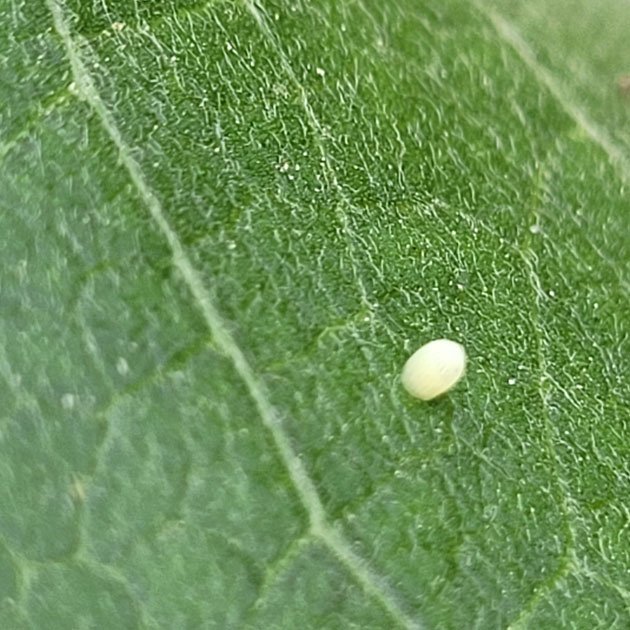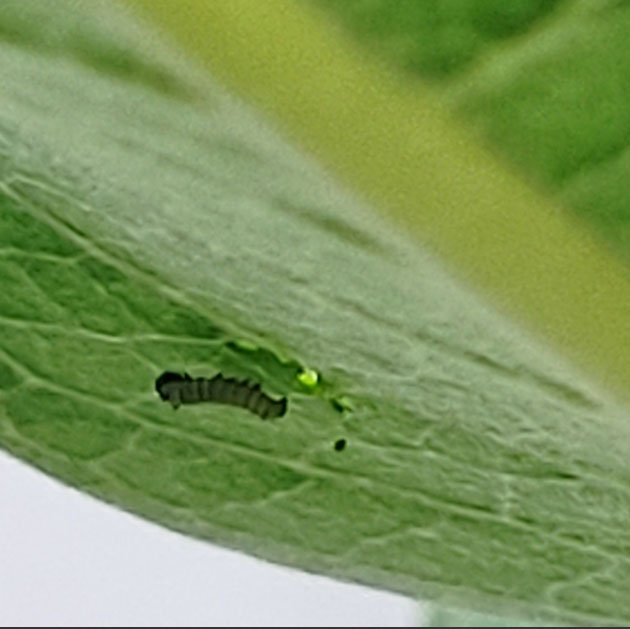Support The Monarch Butterfly In Colorado
Monarch caterpillar on Showy Milkweed
Monarch butterflies are beautiful and fascinating insects. From their migration patterns to their life cycle, they inspire awe in young and old alike. Unfortunately, monarch butterfly numbers are declining, mostly due to loss of habitat. Gardeners can easily help conservation efforts by providing monarch habitats in their own gardens.
LIFE CYCLE
Like other insects, monarch butterflies (Danaus plexippus), have a multi-stage life cycle including egg, larva, pupa, and adult. The entire lifespan, from egg through adult, is about 6 to 8 weeks.
EGG – The monarch butterfly starts off as an egg laid on the milkweed plant. They hatch into the larva after just a few days.
LARVA – For butterflies, the larval stage is the caterpillar, whose sole purpose is to eat milkweed leaves and grow. In two weeks, the caterpillar will have molted five times, increasing its size with each molt. The final caterpillar will be about 4 times the size of the first one.
PUPA (CHRYSALIS) – After the fifth molt, the caterpillar moves away from the milkweed to find a place to pupate. It forms a chrysalis and begins the process of complete metamorphosis, that is, changing into a butterfly.
ADULT – One to two weeks later, the adult butterfly will emerge from the chrysalis and start the life cycle over. As an adult, they live about two to four weeks and will feed on a variety of nectar plants.
In the fall, after four generations, monarchs begin their migration back to their overwintering area, thousands of miles away. The Rocky Mountains divide the monarchs into two groups based on where they overwinter. The Eastern Monarchs, found east of the Rocky Mountains, overwinter in Mexico. The Western Monarchs, west of the Rocky Mountains, spend the winter on the California coast.
FOOD & HABITAT
Adult monarch butterflies will feed on a variety of nectar sources all season long, May through September. When planning your monarch garden, choose flowers that bloom continuously or in succession to provide a consistent nectar source. Plant flowers in larger groups rather than singly throughout the space to better attract the monarchs.
Female monarchs only lay their eggs on the milkweed species (Asclepias species) because that’s the sole food source for the caterpillars. There are two native milkweed species in Colorado: Showy Milkweed (Asclepias speciosa) and Antelope horn milkweed or Spider Milkweed (Asclepias asperula). However, there are many non-native species of milkweed that are also appropriate. Just be sure the scientific name starts with Asclepias so that the monarch caterpillars will be able to eat it.
NOTE: Common Milkweed (Asclepias syriaca) and Tropical Milkweed (Asclepias curassavica) are often described as invasive and are not recommended for home gardens. All milkweeds have some level of toxicity but the Western whorled milkweed (Asclepias subverticillata) is more toxic. They should not be planted where livestock is grazing. Consider these points when deciding on the type of milkweed and the planting location.
Since caterpillars crawl or drop off the milkweed to pupate, it’s best to have the milkweed patch underplanted with lower-growing foliage plants. If you have a lower-growing milkweed, perhaps surround the area with other perennials. That will provide safety from the elements and predators while they are vulnerable during metamorphosis.
MY UNINTENTIONAL MONARCH HABITAT
Two years ago, I discovered showy milkweed growing in my yard. I hadn’t planted it, but it was a wonderful surprise. I watched closely throughout the season for signs of the monarch butterfly and finally found tiny eggs on the leaves. It was such a joy to follow the life cycle and watch the caterpillars grow. I was never able to find the chrysalis’ but it’s my hope that at least one of the butterflies survived. Probably because of the milkweed, I also spotted more adult monarchs in my garden. I look forward to creating a more “wild” space for the monarchs in the coming year.
Swallowtail butterfly on showy milkweed
Creating an appropriate monarch habitat in your garden benefits more than that one species. Many other pollinators will feed on the milkweed flowers, as well. The underplanting will provide cover for other insects, birds will arrive to feed on those insects, and so on.
I hope this post inspires you to create your own conservation garden for monarch butterflies!
RESOURCES
Here are some resources for getting started with a monarch butterfly garden:
Monarch nectar planting guides: https://xerces.org/monarchs/monarch-nectar-plant-guides
Attracting butterflies to the garden: https://extension.colostate.edu/topic-areas/insects/attracting-butterflies-to-the-garden-5-504-2/
Create a monarch waystation: https://monarchwatch.org/waystations/




